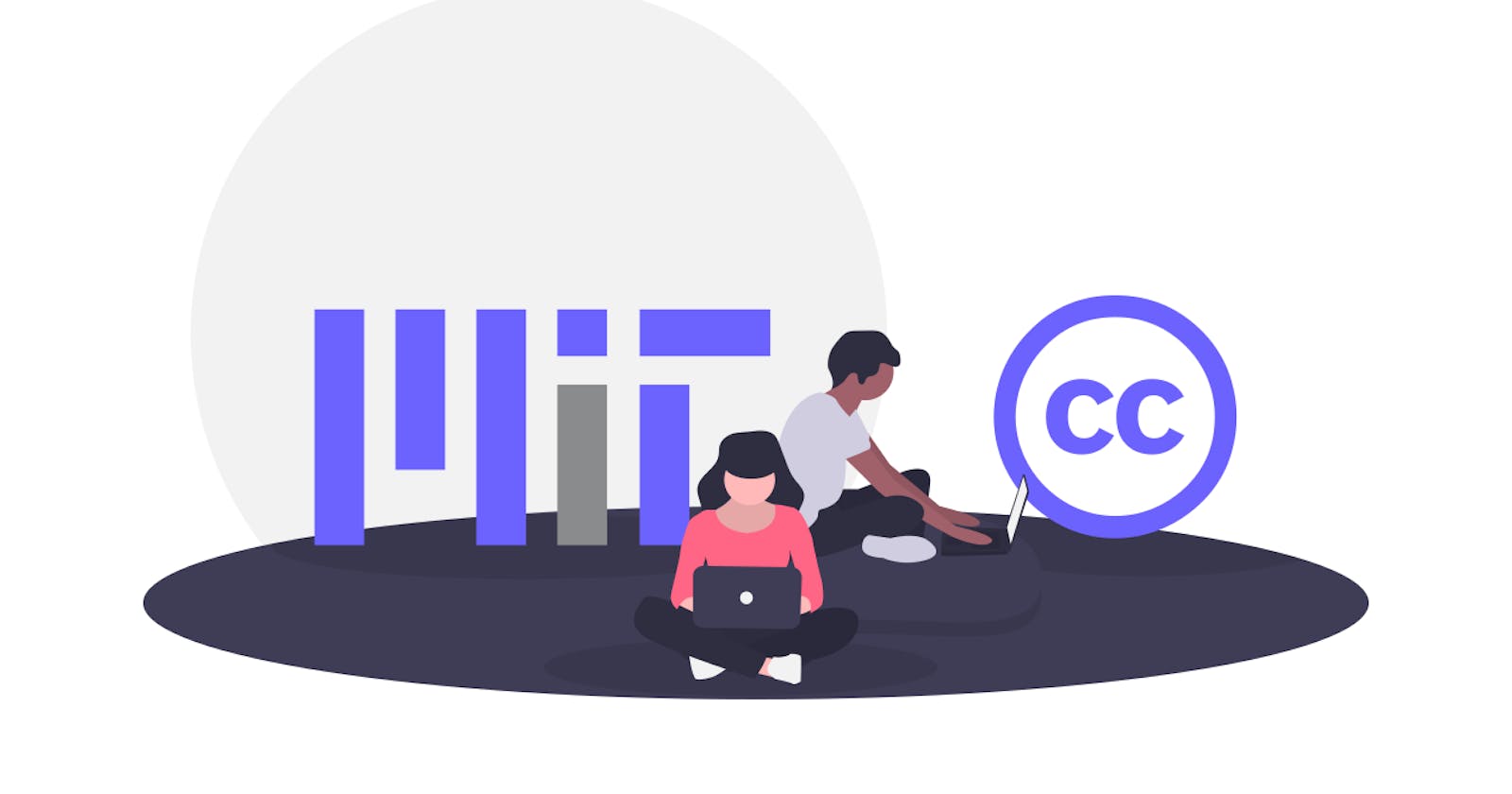Understanding the Different Types of Open Source Licenses: A Guide for Developers and Users
Navigating the complex world of permissive and copyleft licenses
Table of contents
An open-source license is a legal agreement that governs the use, distribution, and modification of open-source software. It provides a framework for users to access and contribute to the software while protecting the rights of the creators.
There are several different types of open-source licenses that have been created over the years. These licenses vary in terms of the rights and responsibilities they grant to users of the software. While there are many different types of open-source licenses, they can broadly be classified into two main categories: copyleft and permissive.
A copyleft license is a type of open-source license that stipulates that any derivative works created from the original open-source code must be released under the same license terms. This ensures that the source code remains open and freely available for others to use, modify and distribute. Copyleft licenses are often used for software libraries and other code that developers want to ensure remains free and open.
On the other hand, a permissive license is an open-source license that offers users more freedom to reuse, modify, and distribute the code as they see fit. These licenses usually don't require any derivative works to be released under the same license, providing more flexibility to the users. Permissive licenses are often used for software intended to be integrated into other projects, where the freedom to use, modify, and distribute the code is important.
Copyleft Licenses
One of the most well-known copyleft licenses is the GNU General Public License (GPL). The GPL is used for a wide range of software, including the Linux operating system, the Apache web server, and many programming languages. The GPL requires that any derivative works be released under the same license, and also includes provisions for the use of trademarks associated with the software.
Another popular copyleft license is the GNU Lesser General Public License (LGPL). This license is similar to the GPL but is intended for software libraries and other code that is intended to be integrated into other projects. The LGPL allows for the code to be linked with non-free software, while still ensuring that the source code remains open and available to others.
The European Union Public Licence (EUPL) is a copyleft open-source software license. It is specifically designed for software developed by public administration organizations. The EUPL ensures compatibility with other open-source licenses and guarantees compliance with EU laws.
The Common Development and Distribution License (CDDL) is a copyleft license created by Sun Microsystems (now Oracle) for the Solaris operating system. It is similar to the Mozilla Public License and the GPL in terms of the rights it grants to users but is not compatible with the GPL.
The Artistic License is an older copyleft license that was created for the Perl programming language. It is similar to the GPL in terms of the rights it grants to users but is not as widely used as some of the other copyleft licenses.
Permissive Licenses
The MIT License is one of the most popular permissive licenses. It is a simple and permissive license that allows for the free use, modification, and distribution of the software, as long as the original copyright notice and license are included in all copies or substantial portions of the software. This license is considered to be a permissive license because it allows developers to use the software in any manner they wish, including for commercial purposes, without the need to contribute their changes back to the open-source community.
The Berkeley Source Distribution (BSD) License is similar to the MIT License, but also includes a disclaimer of liability for the software. The BSD license allows developers to use, modify, and distribute the software without the need to contribute their changes back to the open-source community. However, the license requires that the original copyright notice and disclaimer of liability be included in all copies.
The Apache License 2.0 is another permissive license that includes a disclaimer of liability and requires that any changes to the software be clearly documented. The Apache license is considered permissive because it allows developers to use, modify, and distribute the software without the need to contribute their changes back to the open-source community.
The Mozilla Public License 2.0 (MPL 2.0) is a permissive license that allows for the free use, modification, and distribution of the software, as long as any changes are made available under the MPL 2.0 license.
The Microsoft Public License (MS-PL) is a permissive license created by Microsoft that allows developers to use, modify, and distribute the software without the need to release the source code.
In conclusion, understanding different types of open-source licenses is essential for developers and users who want to make use of open-source software. It is important to be aware of the rights and responsibilities that come with each type of license and to choose the one that best aligns with the goals and objectives of your project.
Copyleft licenses are best for those who want to ensure that the software remains open and freely available, while permissive licenses offer more flexibility for integration and use in other projects. Always consult a lawyer before choosing a license for your project, to ensure that you are making the best decision for your project and its users.

